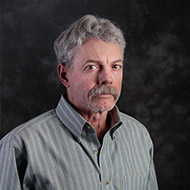Pose that question to any 20 candidates—at any level—and chances are at least 19 will answer, “To pass.” Fair enough. Pilots are goal-driven, and the glow of satisfaction after a successful flight test beats the bitter self-loathing that accompanies failure (an observation reminiscent of Woody Allen’s insight that “Wealth is better than poverty, if only for financial reasons”). Of course, that attitude rests on the presumption that the applicant is already prepared to safely exercise whatever privileges he seeks. If he weren’t, his instructor wouldn’t have signed him off, right? That makes the checkride a combination of trial by ordeal and meaningless formality, something to be endured as painlessly as possible.
If that’s the majority position, it’s a good illustration of the fact that majorities aren’t always right. A contrarian view is that the checkride is the applicant’s last best chance to identify shortcomings that, left uncorrected, could get him or somebody else killed.
A couple of recent developments brought this to mind. Jason Blair’s realization that he’d given the private pilot checkride to a 19-year-old who died in a quadruple-fatal accident just a few weeks later was followed by another examiner’s recollection of having issued an instrument rating to a pilot subsequently killed in a controlled-flight-into-terrain (CFIT) accident at night. Then there was the experience of AOPA’s newest staff instructor, whose CFII ride belied the conventional wisdom holding that the initial CFI is the toughest checkride a pilot ever takes. After nine hours with a respected designated pilot examiner (including lunch), he pronounced his instrument instructor’s exam even more grueling than his initial examination for a flight instructor’s certificate given by an FAA inspector. He also expressed his gratitude that the examiner had taken no shortcuts, given no free passes, and left no easy ways out.
Why? Well, beyond that glow-of-satisfaction thing lies something more fundamental: corroboration that he is indeed ready to teach vital skills without the benefit of extensive first-hand experience. Our colleague is unusually sharp, energetic, and disciplined, but his training history isn’t entirely atypical. Having tailored his commercial training with an eye toward a subsequent CFI, he was ready to test for the commercial once he’d attained the mandated minimum experience, and then switched everything to the right seat and earned his instructor’s certificate after just 10 more hours in the cockpit. He accumulated more experience en route to becoming an instrument instructor, but can’t really be termed a high-time pilot: At age 26, he’s logged about 400 hours that include 80 or so of dual given and about 70 hours of instrument time. Only 10 hours of that—maybe less—were in actual IMC. Other now-seasoned CFIIs we questioned admitted to having as little as five hours’ experience in actual instrument conditions when they first won that credential. (One also remarked that his subsequent experience flying charters in real weather had greatly improved his teaching skills.)
So a good many of us—maybe most—learned or are learning one of aviation’s most exacting disciplines from people whose own grounding in the subject is largely theoretical. That training will have to prepare us for all the complications that come with weather flying: whether to go, scrub, or wait; when to divert and where; how to handle equipment problems or conditions worse than forecast or both. It’s not entirely comforting to know that the first time you miss an approach for real, you’ll be relying on what you learned from someone who may in turn have never actually reached MDA without finding the airport. It’s a little more reassuring to know that the training and testing regimen at least assures that individual’s grasp of all that theory is absolutely solid.
The question of what someone wants from a checkride translates into that of what they want from the examiner. DPEs develop reputations, and instructors gain a pretty good sense of who they’re dealing with. There’s no doubt that a high pass rate helps bring business to flight school and examiner alike, but that doesn’t mean easy checkrides do the candidates any great favors. The process shouldn’t be needlessly excruciating; a five-hour oral for a prospective private pilot is probably overdoing it. But at the end of the ride, the holder of that temporary certificate should feel certain of having gotten everything he or she just paid for: a thorough and systematic assessment confirming his or her ability to safely exercise those newfound privileges.

